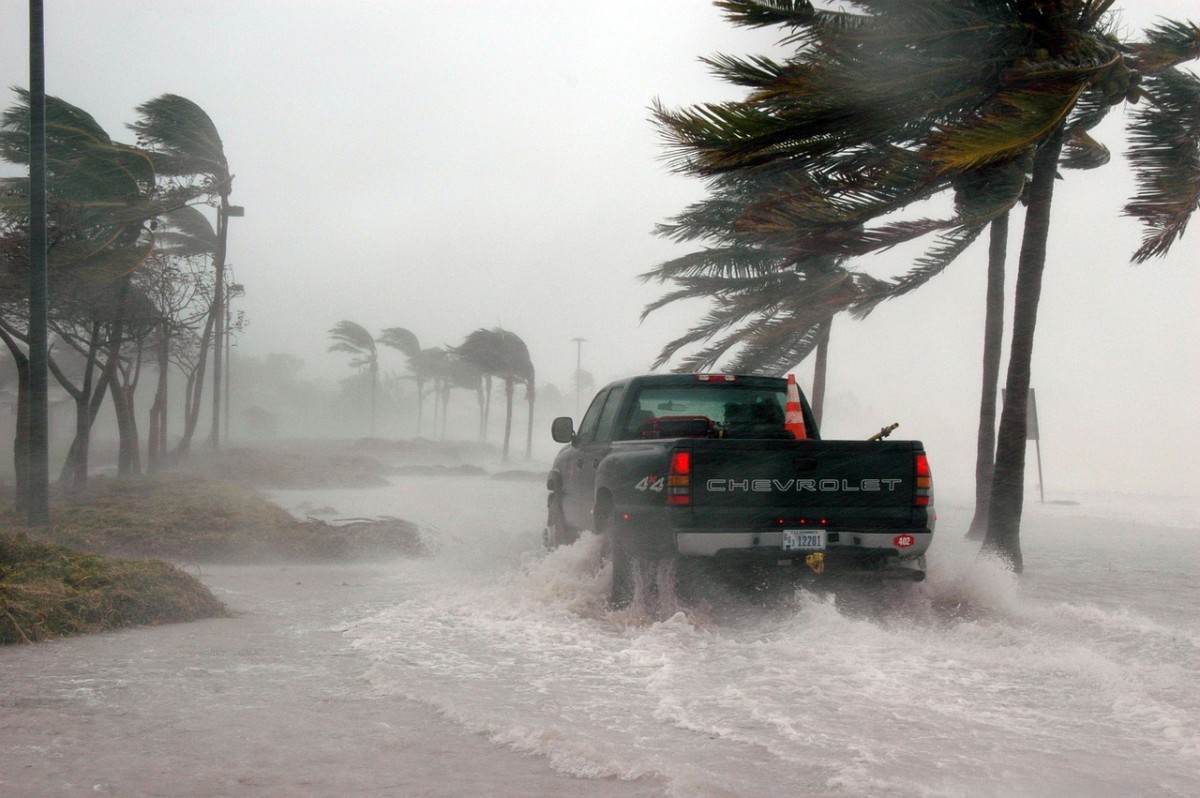Noah's Ark: An Impossible Voyage (Part V)
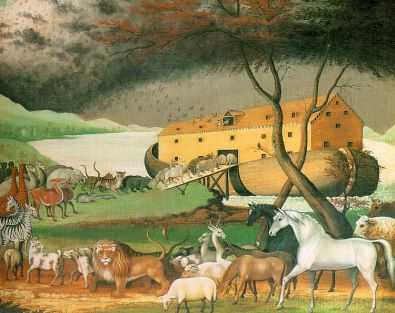
PART V
19. I know you’re just going to claim that “God did it,” in response to all the objections I’ve raised here. But if that’s the case, why did you bother ever writing your article in the first place? What was the point? You promoted a “scientific” essay – meaning you’re trying to explain this fairy tail without any supernatural appeals - but then you don’t include any scientific details! You just gave us your un-credentialed opinions on how some of the logistics might have happened, and then claimed it was “science!” Let’s just stop for a sec and list all the miracles that would’ve needed to occur to make this story possible:
- The boat is built by a 500-year old man with no prior boat-making experience.
- The boat is not physically possible to construct, but came into existence anyway.
- The boat included no blueprints for the parts of boats that keep them from flipping over, yet the boat didn’t flip over.
- Animals from half way around the planet somehow migrated to your boat.
- The unique foods these animals eat somehow migrated as well, contrary to everything we’ve learned from Monty Python (coconuts are non-migratory, after all).
- Animals somehow got back to their homes afterwards.
- 8 senior citizens with no background in exotic animal care somehow managed to care for critters they’d never even heard or dreamt of.
- The cargo and manifest were like a gazillion times larger than the actual boat, but still somehow managed to fit inside.
- No animals that only eat meat were eating any meat.
- There was absolutely no animal reproduction during this entire voyage.
- Nobody was killed (and extincted) during this wooden Poseidon Adventure.
- The boat was barraged by a catastrophic flood for a year, but still managed to end up right about where it started
- Somehow, a ramp was constructed on the outside of an Ark that was sealed from the outside, allowing the animals to get off.
- Every living thing not taken on the Ark was killed, but now somehow all of the carnivores, omnivores, and herbivores have enough stuff to eat in their new soggy world that they don’t die.
- 8 people of the same family and race managed to repopulate the planet with a dozen different races. (wait, I’m sure you handled this one with the Tower of Babel or something. My bad.)
The sheer number of supernatural miracles necessary to make this whole story work is –hands down – the single greatest combination of miraculous occurrences in the history of everything! It’s the Dream Team of miracle-y-type stuff. So why doesn’t the Bible bother to mention it? The Bible trips over itself trying to point out when miracles took place. It waves its arms around like a crack-addled runway tech trying to land a jet on an aircraft carrier letting us know that even the most mundane of miracles might have just taken place. It can’t help itself. But now, like, the definitive Awesomest Collection Of Miracles ever all happen at the same time, and nobody bothers to tell anyone? Ain’t buyin’ it! If there were miracles involved every step of the way, the Bible would have mentioned it. If there were no miracles, your boat ride isn’t possible. Where are we at now? Oh, right. This vacation never happened, guy.
(from here on out the bold letters are my own)
WHY NOAH’S ARK IS NOT EVEN CONCEIVABLY POSSIBLE
When I couldn’t find a definitive answer online, I briefly toyed with the idea of stealing something from our apologist’s playbook and calling Toyota or Ikea or maybe Haliburton to find out how to take care of sheep. But then the drugs wore off and I decided it might prove somewhat more educational to actually talk to someone who knows something about sheep. So I contacted the Dorper sheep breeders at Triple Cross Farm in Anza, California to ask a few questions. The first thing I asked was what the minimum amount of space was to keep 2 sheep alive for a year. The very pleasant lady I spoke with said that one acre (almost 44,000 sq ft) could sustain 5 sheep for a year if their primary source of food came from grazing. (Doubtless that our apologist friends would note that 1 acre is the equivalent of 40 Waffle Houses…or 14,000,000 Shaquille O’Neil shoeboxes…or 175 racket ball courts, or something equally pointless…so one could probably fit like 10,000 critters on the property, or something.) I told her that was out of the question. I said that I was the personal assistant for an incredibly eccentric billionaire who had recently decided to take his family on a year-long world tour aboard his 130-foot yacht.

In my imaginary scenario – as I explained it - he was planning on bringing his 3 dogs, a dozen chickens and a couple goats and sheep along for the ride for fresh eggs and milk. I was told (by a person who actually raises sheep for living - not installs car stereos or writes sermons, mind you) that a grazing sheep might eat 25 pounds of food and drink 4 or 5 gallons of water a day, but that as long as the sheep had room to walk around and get regular exercise, they could potentially be confined in a fairly small space (possibly 1 to 2 hundred sq ft) on a gallon of water and 4 pounds of grain a day. Which means over the course of a 371-day boat trip they’d need 371 gallons of water and about 1,500 pounds of food.
Let me break down just the drinking water issue for you (and I’m only dealing with the “16,000 animals” here): If an average sheep needs an average of 1 gallon of water a day, then 16,000 animals need…um…16,000 gallons of water a day. (Yeah, grasshoppers don’t drink that much, but the hippos and elephants make up for it.) Multiply by 371 days, and you need almost 6 million gallons of water to make your little boat trip. If you don’t know how much water this is off the top of your head, it’s 9 Olympic size swimming pools worth. It’s 121,032 square feet at just over 6.5 feet deep, or 786,708 cubic feet, (roughly 75% of the total space of yer boat) and weighs 48 million pounds!
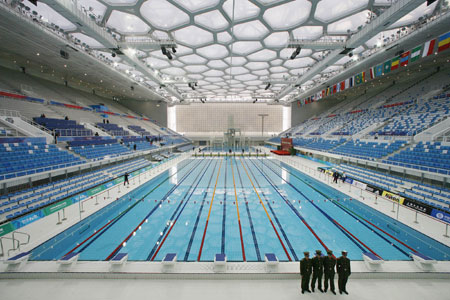
Now let’s rap a sec about food. Your average sheep needs 4 pounds of grain a day to avoid being classified as anorexic or Olsen-ish. With 16,000 animals, that makes 64,000 pounds of food a day (if all your animals are eating grain for some bizarre reason). 64,000 pounds of food times 371 days is 23,477,000 pounds. A bushel (1.2 cubic feet) of grain weighs about 30 pounds, so our total food volume is 782,566 bushels, or about 973,868 cubic feet…about 90% of yer boat.
Space for Waste
What goes in must come out. That means at the start of your voyage you must have equal room empty space for waste as you do for food and water combined because your idiot deity locked your only window, preventing you from dumping it off the boat. Not complicated, right? We won’t delve into the conundrum of answering how 8 senior citizens moved all that waste from one spot to another in the dark, we’ll just sit back and point out that the necessary water is taking up 75% of the Ark, and the requisite food 90%, totaling 165%. Double that for waste and you get 330%. Add in a third of the Ark being building materials and walkways and you get 365%. Throw in the 65% of space the animals are taking up and you’re at 430%. Add in 8 human beings, and our Ark needs to be nearly 4-and-a-half times larger than the boat in Genesis just to keep the pets.
If this still sounds somewhat doable to you, next time you decide to go out on the lake for an afternoon of skiing, pack in a couple of goats and llamas, 200 bags of dog food, and as soon as you push off from the dock, fill your boat all the way up with water, and post the results on youtube.
How Many Animals Could Actually Fit On Noah’s Ark For A Year?
Let’s do this the easy way. Instead of starting off with a preconceived conclusion and trying to shoehorn all the evidence in around it, let’s start with the evidence first (novel concept!), and work forward from there.

Let’s just figure out how much room an animal the size of a sheep requires in order to stay alive for 371 days. We know an average sheep takes up an area of about 4 sq ft just standing still. It consumes a gallon of water a day - 371 gallons over the course of the voyage - which takes up about 50 cubic ft. If the sheep’s water container were 5 feet high, it would take up 10 sq ft. A sheep would require roughly 1,500 pounds of food over 371 days. That’s 50 bushels, or 62 cubic ft. If the food container were 5 feet high, it would take up just over 12 sq ft. So, a sheep’s food and water requirements for 13-month boat trip would take up 22 sq ft, and 112 cubic feet. Double that for the waste, and you have 44 sq ft, and 224 cubic feet. If you’re not going to exercise them regularly, they’d need a pen at least 100 sq ft.
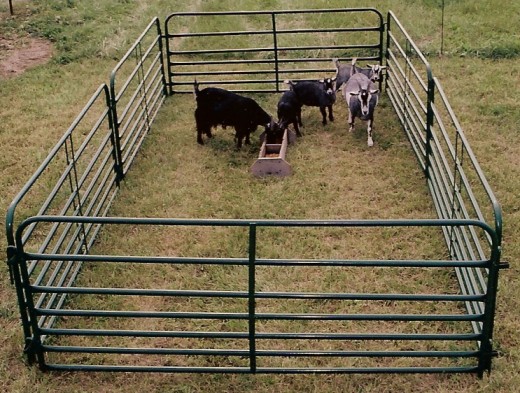
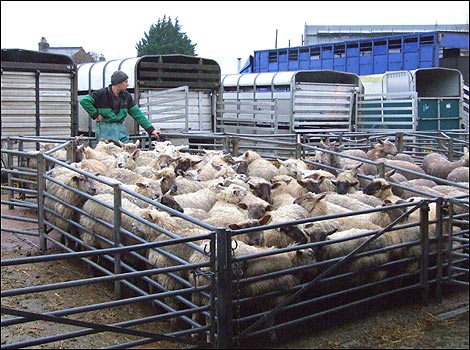
So, to account for food, water, waste, and space, your average animal is going to require a minimum of 144 sq ft of space for a 371-day sea voyage.
We’ve already seen that, given the interior dimensions of the Ark, the building materials, and the walkways, we’ve only got about 65,000 sq ft of room for everything else. 65,000 sq ft of available space divided by 144 sq ft per animal equals room for 451 animals. That’s 225 species IF we only take 2 of each kind. (And you wanted to offer us 50,000…plus DINOSAURS???!!! Have you lost your mind?) Since we need 14 of many of them, we probably have less than 200 species aboard, which actually makes the following artistic rendering seem faintly plausible:

You’ve been arguing for decades that evolution isn’t possible because even if the earth is 4.2 billion years old, there still isn’t enough time for the micro-evolution that Darwinian theory espouses. Now you have to somehow get fewer than 200 species to evolve into over a million in the span of about 4,500 years. You can thank yourself for that mess. That’s what happens when you’re dishonest. When you get called out, you have 2 choices: own up to it…or make up an even bigger untruth to defend the first one.
. Even if we gave you your 100,000 sq ft boat and only 2,000 animals, your boat still isn’t big enough by a long shot. For those of you who don’t already know why such a low figure is suggested as plausible – what with all the animals we have today – I’ll fill ya in right quick: speciation, the observable evolutionary process by which new species emerge. For example, it is commonly accepted that the grey wolf is the parent of the 200+ different breeds of dogs, hence the sharing amongst them of the Latin “surname” canis, from which we get canine. So, Noah didn’t need 2 poodles, 2 sheepdogs, and 2 Great Danes; he just needed 2 wolves. The problem is that taxonomists and zoologists believe (from the available evidence, that is, not a magical fairy book) that the wolf was first domesticated in China about 15,000 BC. Christians contend that that’s not possible. The earth is no more than 10,000 years old - despite all the evidence to the contrary – because our loving Heavenly Father is trying to trick everyone. So Christians have been whining for a century and a half that evolution moves too slow to have actually taken place, but then they want to speed up the process by about 300% of what any reputable scientist has ever argued for in order to get their Ark animals down to a manageable number. And this is why we tend to sit back laughing while you Fundamentalists trip all over yourselves coming up with fanciful explanations for things you’d regard as utter nonsense if any other religion professed them first: Every time you “solve” one problem to your own satisfaction, you end up creating an even bigger monstrosity of a dilemma to take its place.
What is “evident” once all the facts – not opinions – are considered, is that this boat trip isn’t even slightly possible by any stretch of the imagination. When the best argument you can mount is: “It is said by some that most animals have at least an indication of a latent ability to hover and ride air currents, and others have suggested that maybe this is how they crossed the Pacific ocean to get to the Ark, so that’s probably how they got there,” well, my friend, you have derailed. If I’ve learned anything from old youtube comments, this is what is called an Epic Fail.

